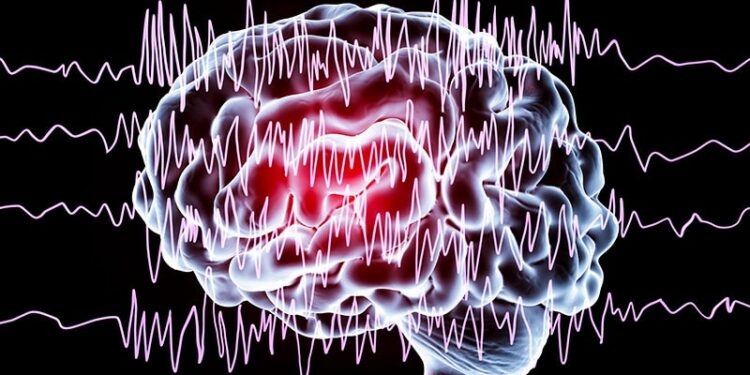[ad_1]
A new tool could potentially reduce epilepsy misdiagnoses by up to 70%, new research suggests.
Known as EpiScalp, the tool uses algorithms trained on dynamic network models to map brainwave patterns and identify hidden signs of epilepsy from a single routine EEG.
When tested in a retrospective, multisite study of data on seizure activity, EpiScalp ruled out 96% of false positive epilepsy diagnoses, cutting potential misdiagnoses from 54% to 17%.
“Even when EEGs appear completely normal, our tool provides insights that make them actionable,” Sridevi V. Sarma, PhD , lead investigator and professor, biomedical engineering, Johns Hopkins University, Baltimore, Maryland, said in a press release.
“We can get to the right diagnosis three times faster because patients often need multiple EEGs before abnormalities are detected, even if they have epilepsy. Accurate early diagnosis means a quicker path to effective treatment,” Sarma added.
The findings were published online on January 16 in Annals of Neurology.
High Rate of Misdiagnosis
Epilepsy affects approximately 60 million individuals worldwide. Estimates suggest that 8%-10% of the general population will experience a seizure during their lifetime but only 2%-3% of these individuals will develop epilepsy.
Scalp EEG is the centerpiece of epilepsy diagnosis. It is also used to assess the risk for future seizures. EEG interpretation is dependent on visual analysis of the reading, focusing on interictal epileptiform discharges (IEDs) and slowing of waveform activity.
However, because of the sporadic nature of IEDs, the sensitivity of scalp EEG to detect abnormalities ranges from 29%-55%, contributing to a 30% misdiagnosis rate.
EEG readings are also subjective, and interpretations may vary by reader. While repeat EEGs increase sensitivity to 92%, the researchers point out that they also place a considerable financial and logistical burden on both patients and the healthcare system.
Most EEG analysis tools focus on detecting abnormalities, including at least one commercially available software product. While previous research has explored epilepsy-specific EEG markers, many of these studies have use healthy controls which limits the utility of the research and does not represent “real-world” clinical settings and may not produce an epilepsy-specific indicator, the investigators note.
Two Novel EEG Metrics
To address these challenges, the investigators analyzed routine scalp EEGs from 218 patients from five US centers who had suspected epilepsy and normal, initial EEGs. Patients’ diagnoses were subsequently confirmed based on an epilepsy monitoring unit (EMU) admission.
Patient data were used to train EpiScalp, a logistic regression model that utilizes spectral and network derived EEG features to differentiate between epilepsy and nonepilepsy.
Previous research by Sharma and her team examined epileptic brain networks using intracranial EEGs showing that that the seizure onset zone is inhibited by neighboring brain regions when patients are not experiencing seizures.
Building on these earlier findings, the investigators examined two novel, network-based EEG metrics — fragility and source link from ictal and interictal intracranial EEGs respectively.
Specifically, one fragility metric and three source-sink metrics were calculated for each EEG.
Of the total dataset from 218 patients, 90% (198) were used to train the tool, while the remaining 10% (20) were used to test the model’s performance. Individuals with a combination of both epileptic and nonepileptic seizures were excluded from the analysis.
Based on EMU results, the final diagnosis of study participants included 119 cases of epilepsy and 99 cases of nonepilepsy.
‘A Paradigm Shift’
Results showed EpiScalp was able to differentiate between epilepsy and nonepileptic conditions with high accuracy, even in cases where the initial EEG appeared normal, the authors noted.
The investigators report that a probability less than 0.32 indicated a 92% likelihood of not having epilepsy, while a probability above 0.61 was classified as “highly likely” to indicate epilepsy.
EpiScalp achieved an area under the curve of 0.940, an accuracy of 0.904, a sensitivity of 0.835, and a specificity of 0.963 in the main sample. For the 20 participants who were set aside for testing, the tool correctly predicted the diagnosis in 80% (16 of 20) patients.
The investigators report that a probability less than 0.32 indicated a 92% likelihood of not having epilepsy, while a probability above 0.61 was classified as “highly likely” to indicate epilepsy.
“EpiScalp provides an accurate diagnostic aid from a single initial EEG recording, even in more challenging epilepsy cases with normal initial EEGs. This may represent a paradigm shift in epilepsy diagnosis by deriving an objective measure of epilepsy likelihood from previously uninformative EEGs,” the investigators wrote.
The research team is now conducting a larger prospective study to further validate their findings across three epilepsy centers and have filed a patent for the EpiScalp technology.
Study limitations include the inclusion of patients who had the benefit of EMU monitoring with video EEG, which could have introduced patient selection bias.
The study was funded by the Louis B. Thalheimer Fund for Translational Research. Sarma and Henry report owning equity in a startup company named Neurologic Solutions, Inc., which may benefit from the findings of this study in the future.
[ad_2]
Source link : https://www.medscape.com/viewarticle/new-tool-estimated-reduce-epilepsy-misdiagnoses-70-2025a10002ot?src=rss
Author :
Publish date : 2025-02-04 07:30:30
Copyright for syndicated content belongs to the linked Source.














